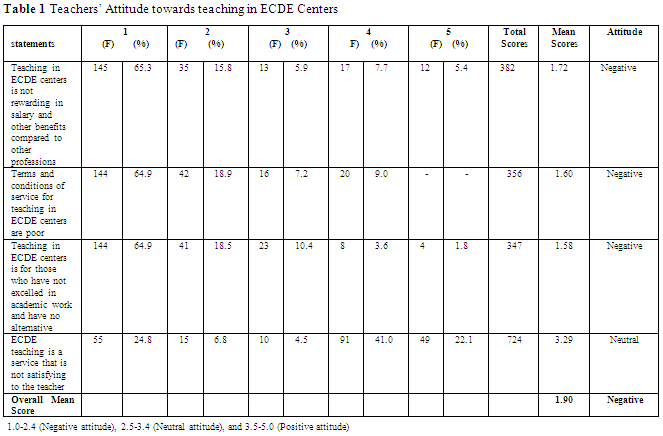Authors: Anthony M. Wanjohi1 and Purity Syokau2
1,2 Kenya Projects Organization
P.0 Box 15509-00503, Mbagathi, Nairobi
Corresponding Author E-mail: wanjohi@kenpro.org
Likert scale is a psychometric scale that is used to measure people’s opinions, attitudes and preferences. It is used in several fields of study such as social sciences. This article presents an introduction on the origin of likert scale and further examines how to conduct a likert scale analysis by using an example.
Introduction
Likert scale was invented by an American psychologist called Rensis Likert in 1932. While scholars in the 1930s employed closed ended questions and objectives to make their research valid, Likert observed that there was a need to measure peoples’ opinions concerning various issues. Likert thus invented the Likert scale which is a psychometric scale that is used to measure peoples’ opinions and attitudes (Sack, 2021). One of the assumptions of the likert scale is that opinions or attitudes are measurable. The most commonly used likert scale is the five-point scale that range from strongly disagree to strongly agree. Each response is assigned a number or otherwise called a score from one to five (McLeod, 2019). For instance “strongly Disagree” may be assigned a score of 1, “disagree” assigned 2, Neutral/undecided a score of 3, “Disagree” a score of 4 and “strongly agree” a score of 5.
How to Conduct Likert Scale Analysis
A likert scale table is composed of a number of likert items or statements that are prepared to answer a specific objective. Respondents respond to these statements by indicating their opinion based on the 5-point likert scale of strongly disagree to strongly agree. A researcher is expected to present the findings and ultimately answer the research objective. Conducting a likert scale analysis involves a number of key steps that lead to a credible conclusion about the objective being studied.
An Example of How to Conduct Likert Scale Analysis
For the purpose of learning, this article uses the results in Table 1 to explain how likert scale analysis is done. The data were analyzed by using mean scores, calculated for each statement in the likert scale.
Determination of Likert scale total scores
Total scores in the Likert Scale were first calculated by multiplying the frequency of each response option by its corresponding likert scale score.
Total scores = Σ(fi × Likert scale Score)
Where:
fi = frequency of each likert scale score (number of respondents)
i = Likert Scale Scores, namely SD (1), D (2), Neutral (3), A (4), SA (5)
For instance, Total scores in statement 1: (145*1) + (35*2) + (13*3) + (17*4) + (12*5) = 382
Determination of Likert scale mean scores
The mean score is calculated by dividing the total scores by the total number of respondents
Mean Score = Σ(fi × Likert Item Score) ÷ Number of Respondents
For instance, the mean score of the first statement as shown in the table is as follows:
Mean Score = [ (145*1) + (35*2) + (13*3) + (17*4) + (12*5) ] ÷ 222
Mean Score = 1.72
Likert scale mean scoring: Attitude was then determined based on the argument that a mean score of 3 in Likert scale represents neutral attitude, mean score of less than 3 represents negative attitude and greater than 3 represents a positive attitude. The range of interpreting the Likert scale mean score was given as follows: 1.0-2.4 (Negative attitude), 2.5-3.4 (Neutral attitude), and 3.5-5.0 (Positive attitude). Table 1 is used to explain how likert scale analysis is conducted.
As shown in Table 1, respondents indicated that teaching in ECDE centers is not rewarding in salary and other benefits compared to other professions (1.72). They also specified that the terms and conditions of service for teaching in ECDE centers are poor (1.60). They further affirmed that teaching in ECDE centers is for those who have not excelled in academic work and have no alternative (1.58). In addition, respondents were neutral (2.70) regarding the statement “ECDE teaching is a service that is not satisfying to the teacher.”
Generally, the respondents had a negative attitude in the majority of the statements. Thus, the study concluded that teachers have a negative attitude (1.90) towards teaching in ECDE centers.
Conclusion
Likert scale is a key tool in measuring objectives that are aimed towards determining the opinions, preferences or attitudes of people on given issues. Thus, it aims to quantify such opinions or attitudes in research.
References
Mcleod, S. (2019, August 03). Likert scale. Simply Psychology. Retrieved from https://www.simplypsychology.org/likert-scale.html
Sack, H. (2020, August 05). Rensis Likert and the Likert scale method. SciHi Blog. Retrieved from https://scihi.org/rensis-likert/

